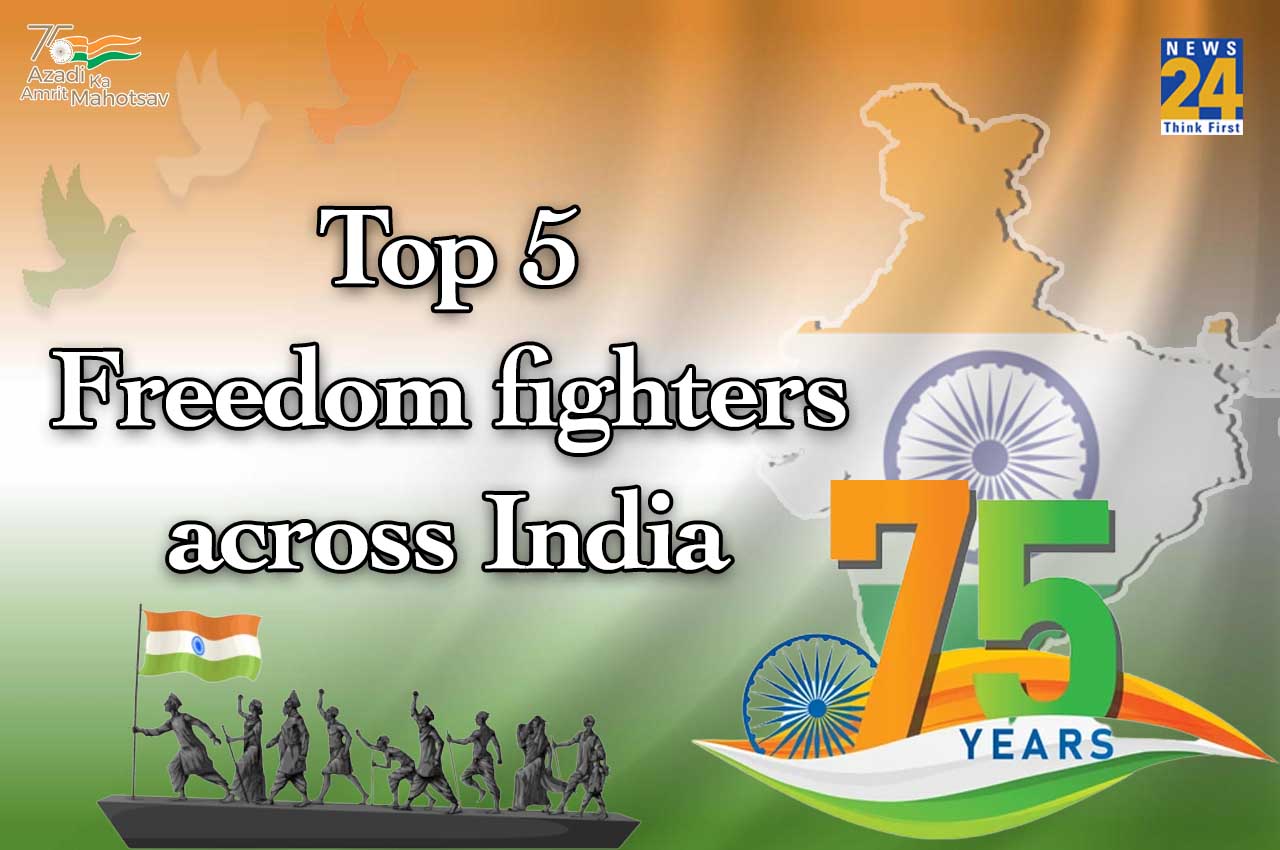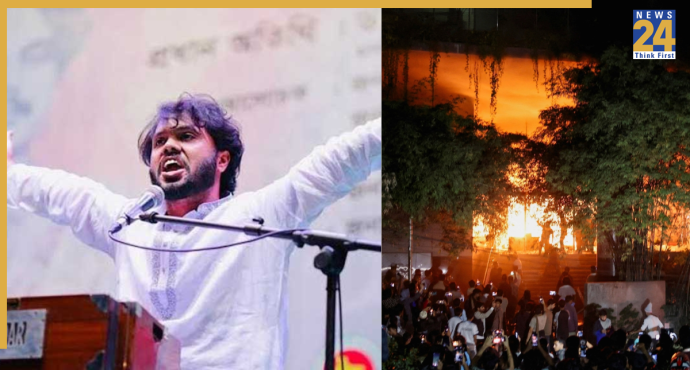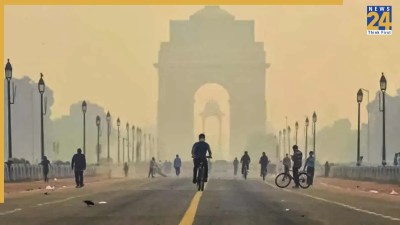New Delhi: India has seen hordes of freedom fighters many known many unknown. They have sacrificed their lives with the aim of achieving independence for India. Here is a list of five freedom fighters and their life journey in brief. They are Bhagat Singh, Mahatma Gandhi, Subhash Chandra Bose, Rani Laxmi Bai, and Pt Jawahar Lal Nehru.
Bhagat Singh: ‘An immortal ideology’

Bhagat Singh
Early life of Bhagat Singh
Being a sharp student he went on to take admission into the National College in Lahore where he studied about European revolutionary movements.
Bhagat Singh parents wanted him to leave a normal life and they wanted him to marry. He left his home in Banga village of Faislabad (now in Pakistan) for Kanpur. He vehemently rejected the suggestion. He said, “if his marriage was to take place in Slave-India, my bride shall be only death.”
Nuajawan Bharat Sabha (Youth Society of India)
Bhagat Singh went to establish the ‘Naujawan Bharat Sabha’ (Youth Society of India). He also joined the Hindustan Republic Association which letter went on to become Hindustan Socialist Republican Association.
Bhagat Singh’s feats of revolution
In December 1928, Bhagat Singh along with Sukhdev and Rajguru made up a plan to avenge the death of Indian nationalist leader Lala Lajpat Rai. He was killed in the Chauri Chaura massacre. They plotted to assassinate the superintendent of police James Scott in Lahore.
However they shot John Saunders, the assistant superintendent of police. Following this mistake, to avoid being arrested Bhagat Singh escape from Lahore to Calcutta. To assume different identity he shaved his beard and cut down his hair. Belonging to the Sikh community which prohibit the shaving of beard and cutting down of hair this was blasphemous. But Bhagat Singh’s intensity to achieve freedom for his nation surpassed any religious dogma.
“Inquilab Zindabad”
Bhagat Singh along with Batukeshwar Dutt bombed the Central Assembly Hall in Delhi on April 1929. This was the moment where they shouted slogans of “Inquilab Zindabad”. Both of them got arrested later for the incident.
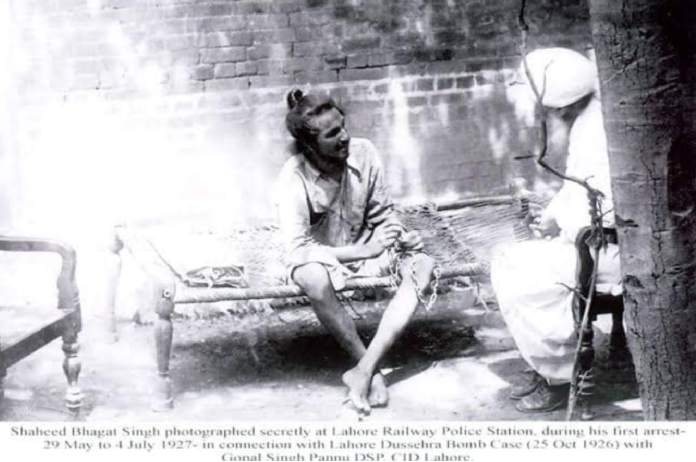
Bhagat Singh
116-day-long fast
Following a long trial, and his days he observed a fast of 116 days apart from all the torcher and atrocities by the British. They used to force hi to eat, beat him while they made him lay down bare bodied on ice and what not. The visual imagination is enough to create tremors in the mind of the one reading this.
Mahatma Gandhi: The non-violent Messiah
Mohandas Karamchand Gandhi was born on 2nd October 1869. He went on to be known as father of the nation and Mahatma Gandhi due to his great actions and commitment to non violence. He was married to Kasturba at the young age of 13. Gandhi was a practicing lawyer he completed his degree from London and went on to practice in South Africa.

Mahatma Gandhi
Interaction with Racial Discrimination
In South Africa here interaction with racial discrimination. Gandhi went on to fight for human rights in South Africa.
Movements and Struggles
Gandhi became famous for his commitment towards none violence. Among some of his famous feats during the Indian freedom struggle were the Dandi March civil disobedience movement, non cooperation movement and quit India movement.
It is interesting to note that Gandhi became a leader of the Congress and declared independence in the late 1930s.
Gandhi’s initial achievement came with Champaran agitation in Bihar. Following the World War 1, he launched the Khilafat Movement in 1919.
Realizing that the British rule was established in India due to the cooperation of the Indian citizens. He appealed the nation to light candles in the Khilafat Movement or the Non Cooperation Movement. The trigger to this moment was that the British Raj was all set to pass the Rowlatt Act.
Indian support to British was a major cause to colonization
Gandhi also played a pivotal role in receding the Indian support to the British Raj. Despite his appeals more than 1.5 million people joined the allied forces in the World War 2.
Following long hall of moment and public support from throughout the nation, Gandhi became one of the key figures in achieving independence for India.
Gandhi did not approved of two nation theory
However, the partition of India and Pakistan was not what Gandhi approved of.
Mahatma Gandhi was killed at 5:17 p.m. on 30th January 1948. He was killed by Hindu nationalist Nathuram Godse while he was going to address a prayer assembly.
Netaji Subhash Chandra Bose: The insignia of leadership
Subhash Chandra Bose was born on 23rd January 1897. He was a widely recognized Indian nationalist figure who challenged British authority in India.
However his alliance with the Nazi Germany and imperial Japan left his legacy vexed by authoritarianism, anti-Semitism and military failure.

Netaji Subhash Chandra Bose
Came to be known as Netaji
He came to be known as Netaji while he was in Germany in early 1942. The soldiers of Indische legion, and by the German and Indian officials in the Special Bureau for India in Berlin.
Joined the Nationalist Movement in 1921
Bose was born in a wealthy and privileged Bengali family hailing from Odisha during the British Raj. He completed his college from England and went on to take the Indian civil service examinations. He qualified in the first attempt but listening to his inner calling he return to India in 1921. He joined the nationalist movement lead by Mahatma Gandhi and the Indian National Congress.
Socialism over constitutional reforms
He was inclined towards Jawaharlal Nehru’s leadership of the group which was less open to constitutional reforms and more open to socialism. He became the Congress President in 1938 but soon after 1939 they were differences between him and the Congress leaders including Mahatma Gandhi over the future federation of British India and princely states.
His grown comfort on negotiable attitude over non-violence and his plans for greater powers for himself made him drift away from Congress. Bose eventually resigned and was ousted from the party.
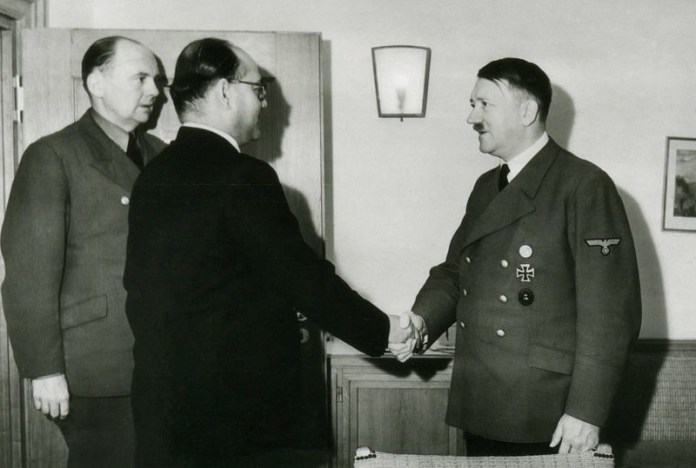
Subhas Chandra Bose meeting Adolf Hitler
Nazi Germany, meeting Adolf Hitler
In 1941 Bose reach Nazi Germany. Negotiated with Adolf Hitler and German friends were used to open a free Indian Centre in Berlin. It was a 3000 strong free India legion from among Indian prisoner of force captured by Africa Korps to serve under Bose.
During his only meeting with Adolf Hitler in late may 1942 a submarine was arranged for Bose. He was involved with a partner Emily Schenkl with whom he gave birth to a baby girl.
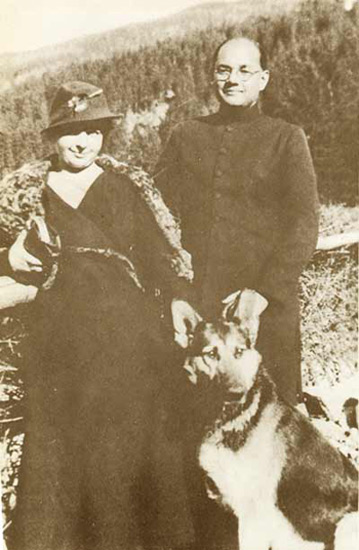
Subhas Chandra Bose and Wife Emilie Shenkl with German Shephard in1937
Influenced by Bhagwat Gita, Swami Vivekananda
Bose was highly influenced by the Bhagavad Gita and revered it as a great source of inspiration for the struggle against the British Raj. He was also inspired by Swami Vivekananda teachings on universalism, his nationalism thoughts and his emphasis on social service and reforms inspired Bose from his young days. Vivekananda’s teachings also give him a fresh prospective towards the ancient Indian scriptures which appealed immensely to him.
Death in an accident
Bose always express that democracy was the best option for India. However, he also believed that no democratic system can overcome India’s poverty and social inequalities.
Subhash Chandra Bose died on 18th August 1945 at the army hospital Nanmon branch of Japanese Taiwan (present day Taipei, Taiwan). The cause of his death was 3rd degree burns following an air crash.
Rani Laxmi Bai: Epitome of bravery & courage
Rani Lakshmi Bai was born on 19th November 1828 in the town of Varanasi. She was born to a Marathi Karahde Brahmin family. She was named Manikarnika Tambe.
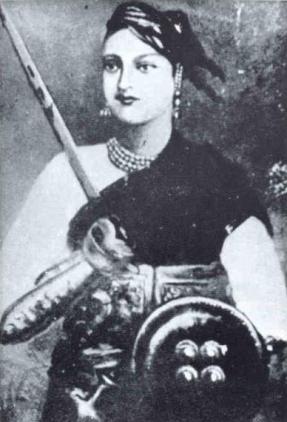
Rani Laxmi Bai
Learnt fighting skills since childhood
She was educated at home and was taught to read and write. She had a more independent childhood then others of her age. She also learnt shooting, horsemanship, fencing, and mallakhamba with childhood friends Nana Sahib and Tantia Tope.
Adopted a son after her son died
Manikarnika was married to the Maharaja of Jhansi, Gangadhar Rao Nevalkar in 1842. She was given the name Rani Lakshmi Bai as per the Maharashtrian tradition of a new name post marriage. The name was given in honor of the Hindu Devi Lakshmi.
In 1851 she gave birth to a boy named Damodar Rao. He died 4 months after he was born due to chronic illness. They then adopted Maharaja’s cousin Gangadhar Rao’s son who was renamed Damodar Rao on the day before maharaja died.
This was done in presence of a British officer. However, Governor General Lord Dalhousie applied the Doctrine of Lapse and rejected his claim to the throne.
Role in the Revolt of 1857
On May 10, 1857 the Indian rebellion against the British Raj started in Meerut. Rani of Jhansi cleverly obtained the permission to raise an army of men with weapons. British political officer captain Alexander gave the affirmation.
There were a female from relatives to claim Jhansi. However, she defended Jhansi when British troops under the command of sir Rose besieged Jhansi on 23rd march 1858.
“Burn my body to ashes, before Britishers touch it…”
Tatya Tope sent a 20,000 strong army to help Rani Lakshmi Bai. They were however, unable to defend palace. The forces led by General Rose, finally took Morar following a successful attack on the city on 16 June.
During the last fight with the British, the Indian forces led to a slaughter of almost 5000 army men led by Rani Lakshmi Bai. This, however, turned out to be the last fight with a British that Manikarnika was a part of.
Historians believe that she was badly heard and the last movements of a life were spent on the road badly hurt and bleeding. Even at the last moment of a life she did not wanted her body to be seized by the Britishers. She told a hermit to burn her body before any British touch it.
Pandit Jawahar Lal Nehru: The First PM of free India
Jawaharlal Nehru more comedy known as pandit Jawaharlal Nehru was an Indian anti colonial nationalist, secular humanist, social democrat and an author.
He served as the prime minister of India for 17 years. He completed his education in England at Harrow school and Trinity College, Cambridge.
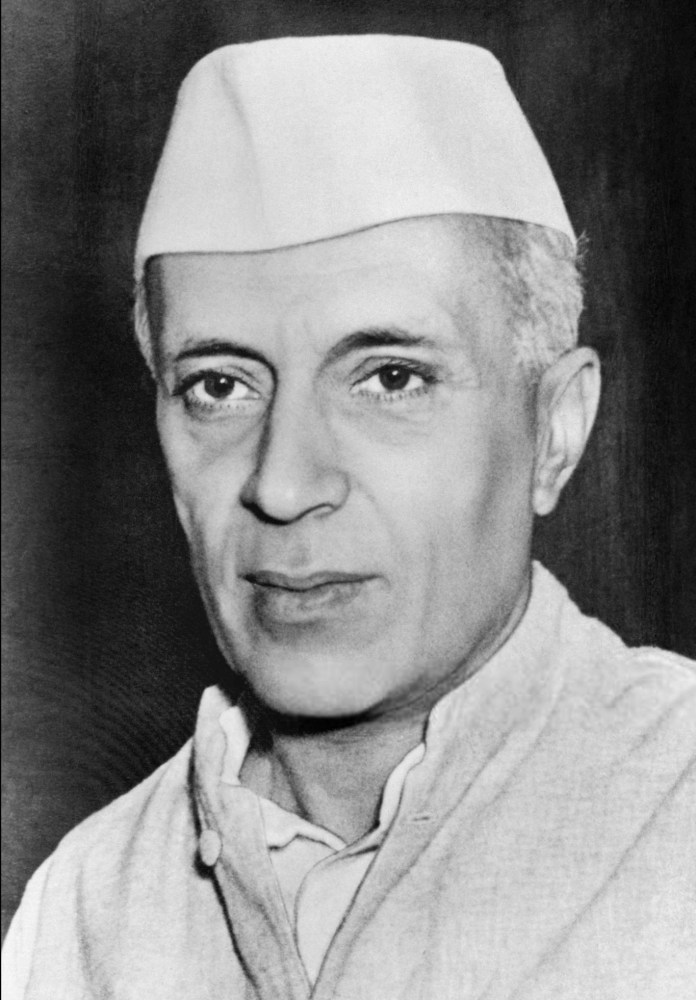
Pt. Jawahar Lal Nehru
Joined the Indian National Congress
He became a barrister but return to India and got in enrolled in the Allahabad High Court. But his interest was in National politics. He joined the Indian National Congress and rose the post of the leader during the 1920s.
Mahatama Gandhi’s Political heir
Mahatma Gandhi designated him as his political hier. Serving as the President of Congress in 1929, Nehru called for complete independence from the British Raj.
Nehru at first doubted the effectiveness of the Congress. But he was inspired by Mahatma Gandhi’s civil right movements in South Africa.
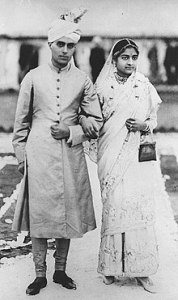
Pt Jawahar Lal Nehru with Kamla Nehru
Nehru’s marriage
Nehru married Kamla Kaul in 1916. Their only daughter Indira was born a year later. The also give birth to a boy but he is succumb to death in a week.
Nehru was arrested by the British forces at the Chauri Chaura movement in 1920. He was arrested on the charges of anti government activities in 1921 but was released in a few months.
Conflict between Gandhi and Nehru
Although, Gandhi suddenly stopped the Non-Cooperation Movement but Nehru remain loyal to him. He did not join this Swaraj party which was created by his father Motilal Nehru and CR Das despite many offers.
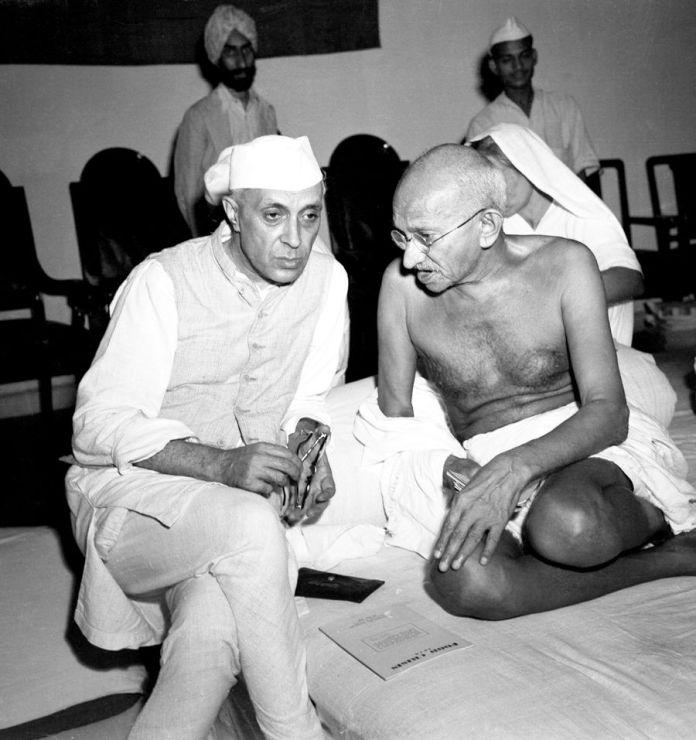
Gandhi and Nehru in 1942
Policies drafted by Nehru
Nehru was also among the first to draft policies for a free India. In it were drafted the aims of Congress for the nation. It included freedom of religion, right to form associations, freedom of expression of thought, equality before law for every individual without extinction of caste, colour, creed, or religion.
He also sort protection of regional languages and cultures, safeguarding the interest of the peasants and laborer’s, abolition of untouchability, introduction of adult franchise, imposition of prohibition, nationalization of industries, socialism and the establishment of a secular India.
Died of heart attack
Nehru’s death is believed to because by heart attack. Is that was announced at 2:00 p.m. local time on 27th May 1964. He was cremated as per Hindu traditions wrapped in the Indian National tricolor flag on 28th May.

